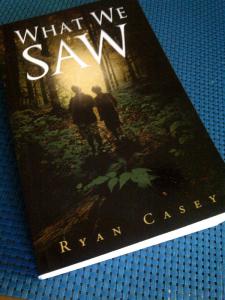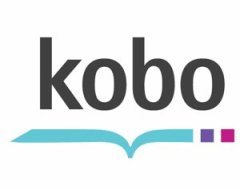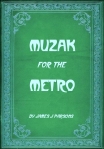Well, I’m back.
I won’t bore my readers with lengthy explanations as to why I’ve been silent on this blog, or ruminate on how to make the time, and how that’s easier said than done. Much easier said than done, as I’ve learned in the last few weeks. Instead, I’ll doff my cap, humbly apologize, and move right along. You can’t get back on the horse without putting your foot in the stirrup…or something like that.
So, right to it. In my time “away,” I had lots of time to miss reading. Especially reading Indie work. In such a lapse as this, it would have been easy for me to step back from the Indie Writer’s world completely, and let it run along as it does. In fact, I was so deep into my work that I didn’t read anything, let alone write. I’ve built a habit of reading and reviewing Indie work in the last several months, but like any habit, if you let it lapse long enough, it can fade away. You lose the routine.
Fortunately, in the midst of my busyness, I had a wonderful reminder of why we do this. Ryan Casey’s debut novel What We Saw came in the mail.
 Some time ago, Ryan started a crowd sourcing initiative on Pozible, to raise money to have his book printed in paperback. It was very successful–his goal was reached in twelve hours, and he ended up raising close to double his goal in the end. He said it was an experiment, and it’s one we can all learn from–know what you want, find out how to get it, and just do it. It was also a wonderful example of how well the Indie Writer’s community works together. You don’t find this kind of collaboration in the Traditional Publishing Industry.
Some time ago, Ryan started a crowd sourcing initiative on Pozible, to raise money to have his book printed in paperback. It was very successful–his goal was reached in twelve hours, and he ended up raising close to double his goal in the end. He said it was an experiment, and it’s one we can all learn from–know what you want, find out how to get it, and just do it. It was also a wonderful example of how well the Indie Writer’s community works together. You don’t find this kind of collaboration in the Traditional Publishing Industry.
I contributed a modest sum to his campaign, and the reward was a copy of his paperback. Living overseas from him, I didn’t receive it until recently–such is the way of snail mail. But really, it couldn’t have come at a better time. I’ve been doubting myself lately in terms of my writing–never making the time, at a loss for ideas, spinning my wheels on ideas I have developed. I recognise all of this as part of a cycle I’ve been a part of for years–it means I’m winding down, and will soon put down the writing for years, until I get the urge to try again. Or, that’s been the pattern.
Receiving Ryan’s book reminded me of two points: that achieving your dreams can be as simple as pursuing them with abandon, and–this is the important one–it’s not impossible to achieve them. Not even close to impossible. Here was the physical proof: a genuine professional grade paperback novel, written by a young guy in between his studies at University. And this isn’t vanity press; he’s made some real money off this venture. It’s an excellent book. It’s got legs. And all because Ryan had an idea, a dream, and a plan to go out and grab it.
When I was Ryan’s age, I was at University, writing my never ending novel on a Palm Pilot with a fold out keyboard, whiling away the hours at coffee shops and pubs, completely lost in this fantasy world I’d created. I see part of myself in Ryan’s creative energy–the difference is that he went further than I ever did, and he grabbed the golden ring. I used to regret that I never finished my book, but now, I just see it as unfinished…for now. Seeing this kind of tangible result is a great motivator. It’s a reminder to keep looking out for your dreams, to keep moving forward. But mostly, I see it as a held out hand. This is a fellow writer saying “come with me, we’re going the same way.”
Now, of course, Ryan isn’t the only one who’s achieved some measure of success, and he’s not the only Indie I find inspiring. J. M. Ney-Grimm, Lindsey Buroker, David A. Hayden, Brian Rathbone, and so many others whose books I’ve been reviewing on this blog–all of these people are hallmarks of what makes this community great. Look them up on twitter, find their blogs, read their stories; you’ll find that each and every one of them is just like you. And if you’re not a writer, do all those things anyway. There’s a greater lesson to be learned here besides how to publish your work online. Personally, I think it’s one of the greatest lessons you can learn in life, and all of these people are living embodiments of it. I can sum it up in the words of non-profit guru Dan Pallotta: “You can have all the things you want, or all the reasons you can’t have them.”
And it’s really as simple as that.
I’ve got lots of work to do, and lots coming up on Speaking to the Eyes. Bear with me as I get back into the swing of things, but watch this page for upcoming reviews of J.M Ney-Grimm’s Troll Magic, news about a great contest by Indie juggernaut J.F. Penn, and of course, the ruminations of a writer/reviewer trying to learn his way through the world of Self Publishing!







